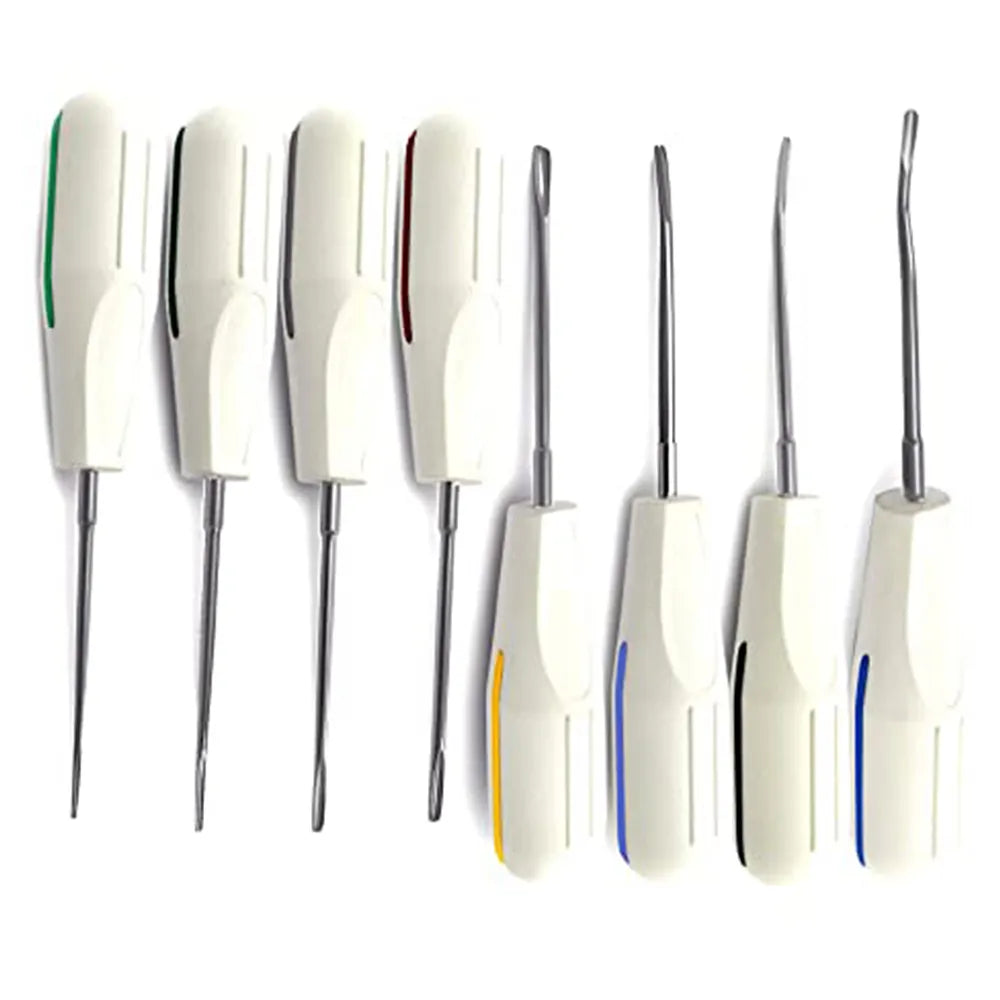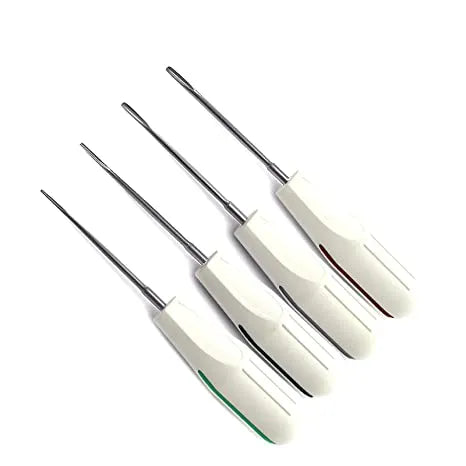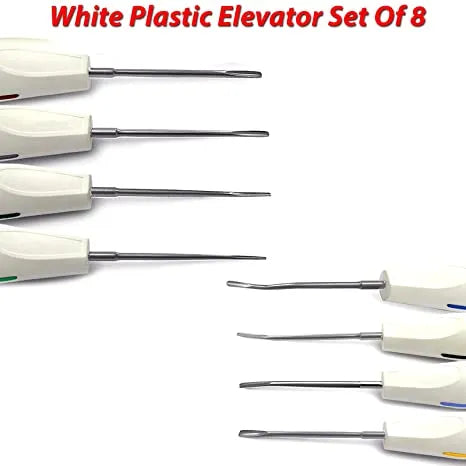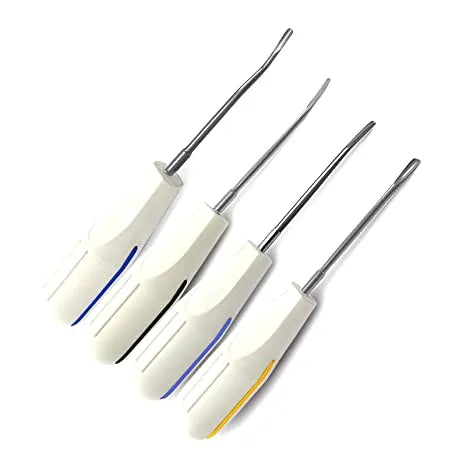General Imported Instruments
GII LUXATORS (Set of 8)
GII LUXATORS (Set of 8)
Couldn't load pickup availability
GII incorporates the world-acclaimed ergonomic handle and a unique cornered, rigid tip that enables the elevation of roots without risk of damaging the adjacent tooth.
The thin and sharp blade of luxators is designed to be pushed into the periodontal ligament space along the long axis of the root to cut the periodontal membrane and expand the alveolar socket.
- 3S: 3mm Straight, used in apical and interproximal areas
- 3C: 3mm Curved, Interproximal, good access from the buccal side
- 5S: 5mm Straight, used in apical and interproximal areas
- 5C: 5mm Curved, Interproximal, good access from the buccal side
- 2S: 2mm Straight, used in apical areas for extraction of broken root tips
- 3 IC: 3mm Inverted curved, Good access from the lingual and/or distal side.
- 4C: 4mm Curved Interproximal, good access from the buccal side.
- 4S: 4mm Straight, used in apical and interproximal areas.
Features
Features
Made of high grade Stainless Steel
- Ergonomic Design
- Plastic Handles
- Sharp Tip - Better adaptation to root surface cut PDL easily
- Large handles - Better Operator fit
Rust Free:
- Corrosion Resistant - Passivated
Disinfection:
Autoclavable at 135 degree celsius
Description
Description
Specification
Specification
Instrument Name Luxators
Type Dental luxator
Category Oral Surgery
Material Stainless Steel
Disposable / Reusable Reusable
Sterile / Non-Sterile Non - Sterile
Latex / Latex - free Latex Free
Packaging
Packaging
LUXATORS (Set of 8)
- 3S: 3mm Straight
- 3C: 3mm Curved
- 5S: 5mm Straight
- 5C: 5mm Curved
- 2S: 2mm Straight
- 3 IC: 3mm Inverted curved
- 4C: 4mm Curved
- 4S: 4mm Straight
Direction to use
Direction to use
- Select the appropriate size of instrument for the size of the root
- The size of instrument required may change as the tooth loosens, i.e. smaller diameter instruments may be required to cut periodontal ligament apically than required at the start of the extraction
- Luxators should not be used for leverage as this will damage the fine working end
- Luxators should be held in the palm with the index finger extended towards the tip of the blade. This will minimize trauma to the patient in the event of instrument slippage
- The operator’s nondominant hand should be used to retract soft tissues, stabilize jaw and support the alveolar process
- Luxator should be inserted in the periodontal space using gentle pressure until resistance is felt. Hold the luxator in position for a few seconds to stretch and disrupt the periodontal ligament. Gradually move the tip of the luxator to the apex of the tooth.
- Luxators are used to cut periodontal ligaments within two-thirds of the length of the root.
Additional info
Additional info
Warranty
Warranty
- 6 Months warranty against Rust
Product Related Questions
Product Related Questions
Question: Are GII Luxators safe for use on patients?
Answer: GII Luxators are designed with safety in mind. Their ergonomic handles provide a comfortable and secure grip for the dentist, while the unique design of the tips ensures precise and controlled manipulation during extractions, reducing the risk of tissue damage.
Question: Can GII Luxators be used for all teeth?Answer: Yes, GII Luxators are versatile tools suitable for various dental procedures, including the removal of mandibular molar roots, impacted molars, and broken root tips. Their range of sizes and shapes allows for use in different areas of the mouth.
Question: Are these luxators autoclavable ?Answer: Yes, the GII Luxators (Set of 8) are autoclavable. Autoclaving is a common and effective method for sterilizing dental instruments, including luxators, to ensure they are free from microorganisms and safe for use in dental procedures.
Share








